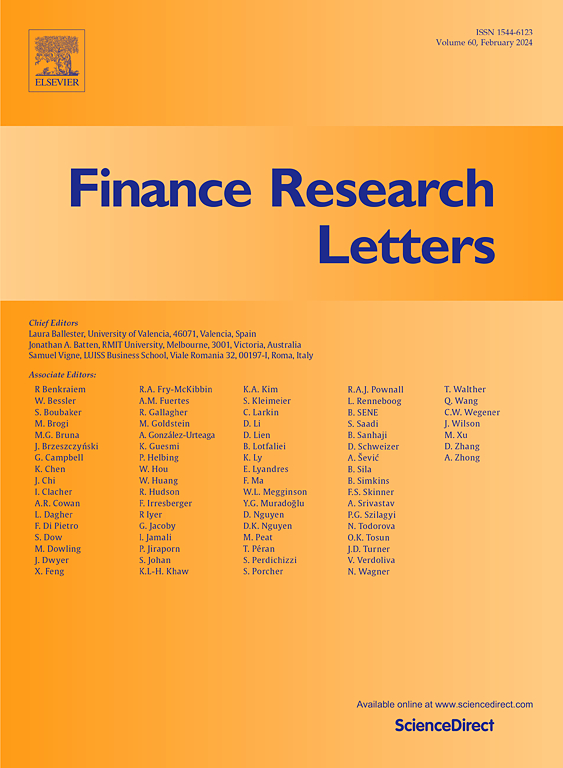基于动态时间规整的协方差结构的投资组合优化
IF 7.4
2区 经济学
Q1 BUSINESS, FINANCE
引用次数: 0
摘要
传统的协方差结构不能捕捉到资产之间的非线性关系,并且会受到时间滞后的影响。本文提出了一种利用动态时间翘曲(DTW)算法进行投资组合优化的协方差结构。提出了变换DTW和协方差DTW两种方法,前者对DTW距离进行变换,后者利用空间协方差函数对协方差进行参数化估计。使用美国股票市场的数据,我们检验了我们的方法,以最大的多样化,等加权风险贡献,和分层风险平价投资组合。实证分析表明,与传统的协方差结构相比,该结构的性能有所提高,在再平衡过程中权重变化较小。本文章由计算机程序翻译,如有差异,请以英文原文为准。
Portfolio optimization using a covariance structure based on dynamic time warping
Traditional covariance structures fail to capture non-linear relationships between assets and are distorted by time lags. We propose a covariance structure using the Dynamic Time Warping (DTW) algorithm for portfolio optimization. Two methods are presented: Transformed DTW, which transforms the DTW distance, and Covariance DTW, which uses a spatial covariance function to parametrically estimate the covariance. Using data from the U.S. stock market, we examine our approach to the Maximum Diversification, Equally Weighted Risk Contribution, and Hierarchical Risk Parity portfolios. The empirical analysis shows improved performance over traditional covariance structures, with lower weight changes during rebalancing.
求助全文
通过发布文献求助,成功后即可免费获取论文全文。
去求助
来源期刊

Finance Research Letters
BUSINESS, FINANCE-
CiteScore
11.10
自引率
14.40%
发文量
863
期刊介绍:
Finance Research Letters welcomes submissions across all areas of finance, aiming for rapid publication of significant new findings. The journal particularly encourages papers that provide insight into the replicability of established results, examine the cross-national applicability of previous findings, challenge existing methodologies, or demonstrate methodological contingencies.
Papers are invited in the following areas:
Actuarial studies
Alternative investments
Asset Pricing
Bankruptcy and liquidation
Banks and other Depository Institutions
Behavioral and experimental finance
Bibliometric and Scientometric studies of finance
Capital budgeting and corporate investment
Capital markets and accounting
Capital structure and payout policy
Commodities
Contagion, crises and interdependence
Corporate governance
Credit and fixed income markets and instruments
Derivatives
Emerging markets
Energy Finance and Energy Markets
Financial Econometrics
Financial History
Financial intermediation and money markets
Financial markets and marketplaces
Financial Mathematics and Econophysics
Financial Regulation and Law
Forecasting
Frontier market studies
International Finance
Market efficiency, event studies
Mergers, acquisitions and the market for corporate control
Micro Finance Institutions
Microstructure
Non-bank Financial Institutions
Personal Finance
Portfolio choice and investing
Real estate finance and investing
Risk
SME, Family and Entrepreneurial Finance
 求助内容:
求助内容: 应助结果提醒方式:
应助结果提醒方式:


